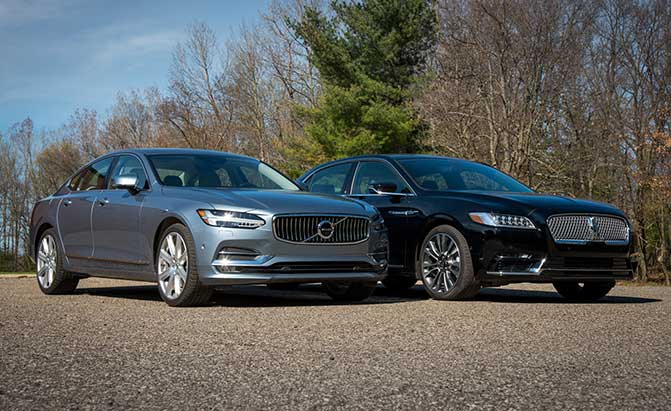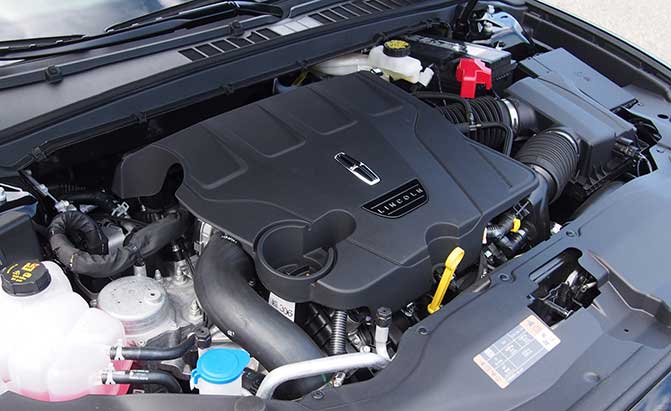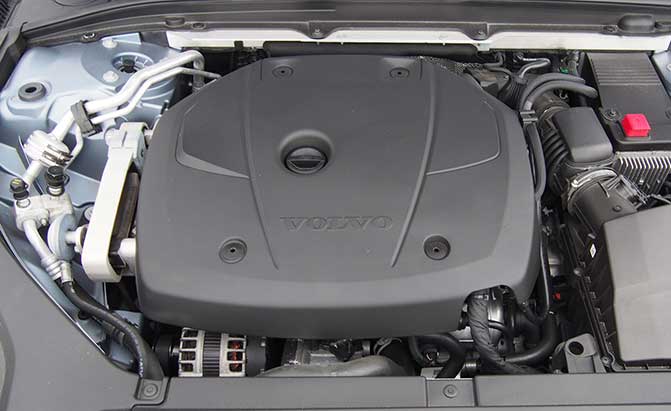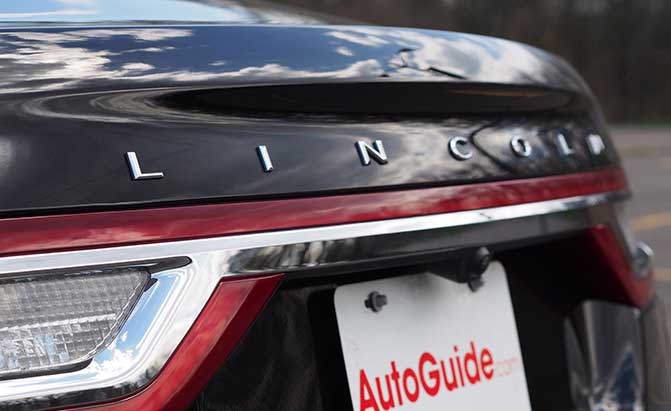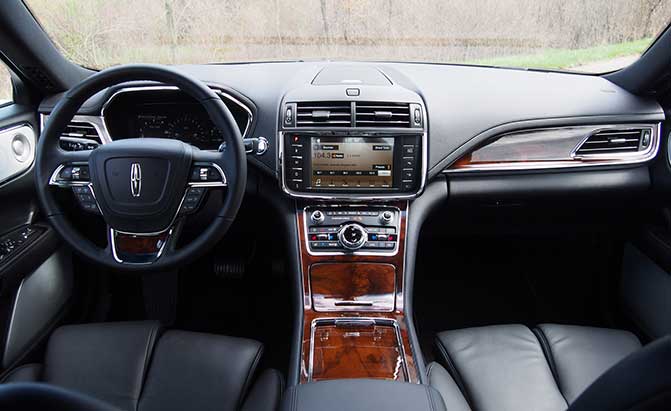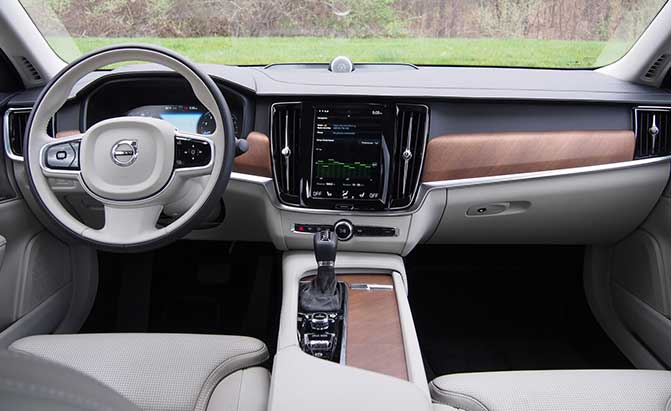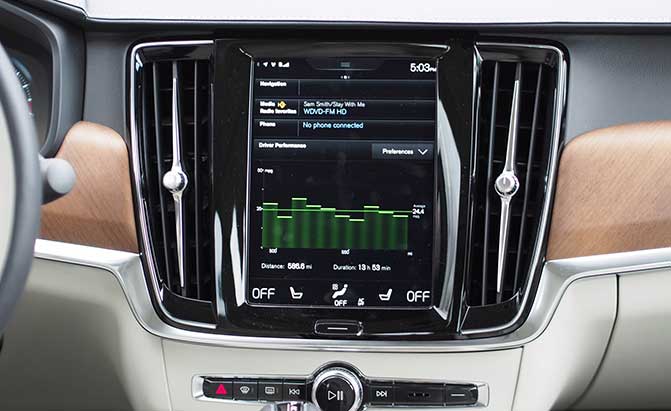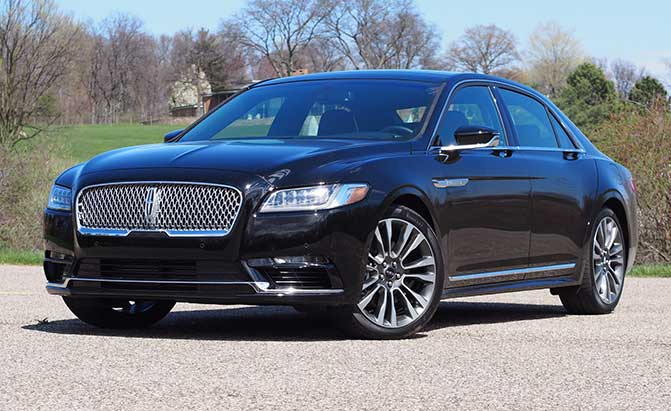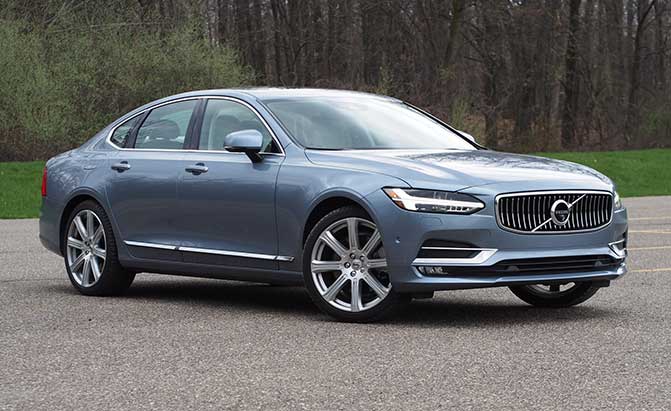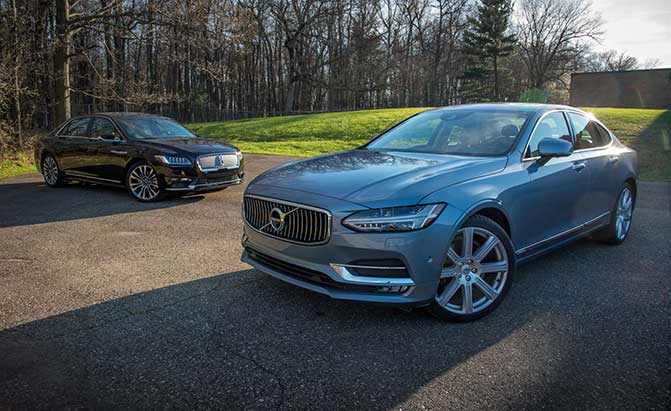After years of stumbling, both Lincoln and Volvo have regained their footing.
With newfound vigor, these companies have introduced several new products in recent years, including a couple fresh-faced sedans, the Continental and S90, respectively. In spite of their dramatically different philosophies, these four-door cars have more similarities than you might think, making them well-matched if unexpected rivals.
The reborn Continental is a product Lincoln can a last be proud of. Bucking the alpha-numeric nonsense that’s overtaken today’s industry, the company tapped its abundant heritage, resurrecting this fabled nameplate, applying it to a glittery four-door that’s rife with unique features.
Get the Flash Player to see this player.
While the Conti is unabashedly American, Volvo’s S90 is restrained and elegant from every angle. Packing an outrageously efficient drivetrain and a giant touchscreen infotainment display, this sedan is light on its feet and high on good taste, the embodiment of subtle Swedish luxury.
Made to Measure
These cars may be literal worlds apart, one hailing from Southeastern Michigan, the other Northwestern Europe, but foundationally, they could have been created by the same product development teams. Following well-established practices, each one has a transversely mounted engine that’s equipped with forced-induction, features all-wheel drive and coddles passengers in a spacious, well-trimmed interior.
The Continental and S90 are also dimensionally quite similar, even if the Lincoln looks a lot bigger. Overall, it is about six inches longer with a wheelbase that’s roughly two inches greater; it’s also a wee bit wider and taller, though these tape-measure advantages don’t necessarily translate into significantly more room. All in, the Volvo’s trunk is supposedly one cubic foot larger, measuring 17.7.
Compare Specs
Hot-Rod Lincoln
The high-end Continental Reserve model we tested was powered by a Lincoln-exclusive 3.0-liter twin-turbocharged V6. Quiet and refined, this engine delivers 400 – both horsepower and pound-feet of torque. Matched to a six-speed push-button automatic transmission and standard torque-vectoring all-wheel drive, it is rather inefficient, stickering at 16 miles per gallon city (14.4 L/100 km) and 24 highway (9.7 L/100 km).
Still, this 4,547-pound sedan (2,063 kg) has enough sauce to hit 60 miles an hour in the mid five-second range. But if less is more, two other V6s are available, each of which can be had with either front- or all-wheel drive.
Luckily for buyers, Lincoln offers more affordable drivetrain options because as tested our Conti cost a princely $75,965 (including $925 in delivery fees), and it wasn’t even a range-topping Black Label model. Fortunately, base examples are much more reasonable, starting at around 46 large.
Helping alleviate some of our sticker shock was a passel of luxury amenities. Things like LED headlamps, a pounding 19-speaker Revel sound system and 30-way adjustable front bucket seats went a long way to justifying that 75-grand figure.
Lighter and Tighter
In comparison, the S90’s as-tested price of $66,365 seems downright reasonable. The T6 Inscription model we tested featured a turbocharged and supercharged 2.0-liter four-cylinder engine. Pressurized to the point of bursting, it punches far above its weight class, churning out 316 horses and 295 lb-ft of torque. Making the most of all that giddy-up is an advanced eight-speed automatic gearbox.
A T5 engine is also available in lesser versions of the car, which gives up 66 horses to its “big brother,” though truth be told, both powerplants are essentially identical, s
haring the same bore, stroke, fuel-delivery system, firing order and octane requirement. Compression ratio and boost pressure are the primary differences, except T5s are only offered with front-wheel drive. For context, an entry-level S90 can be had for around $48,000.
Despite its significant power deficit compared to the hot-rod Lincoln, this Volvo feels every bit as quick. You can thank its more resourceful transmission and near-500-pound weight advantage for the sprightly performance.
It may not sound a nice or feel quite as smooth, but four-cylinder efficiency is hard to argue with. This Swede should return 22 mpg (10.8 L/100 km) around town and 31 (7.6 L/100 km) if you stick to the interstate, damn impressive figures for a sizable luxury car.
It’s the Little Things
After making several laps around the Conti like a hyena circling an injured wildebeest, I’d be remiss if I didn’t comment on this car’s exterior styling. It’s beautiful, in sections.
For instance, I love the rear end with “Lincoln” spelled out. The multi-element headlamps, beltline-mounted door handles and brushed-metal trim on the side-view mirrors is all undeniably sharp. But the skimpy dash-to-axle ratio, Bentley fenders, and Jaguar grille give this car an almost recycled vibe, never mind that it’s derived from a Ford Fusion.
ALSO SEE: 2017 Audi A4 vs 2017 Mercedes-Benz C300
Lincoln has some of the greatest design heritage of any car company, why not replicate that magic instead of borrowing from other automakers?
At least the Continental makes a positive first impression. Its standard “E-Latches” are a gratuitous touch that nonetheless gives this car a special feel. Engineers replaced traditional mechanical door handles with electrically operated units that are activated by micro-switches. Beyond this, the Conti also has automatic soft-close doors, another unnecessary if nifty touch.
Sliding into the back seat, passengers are treated to miles of legroom, or at least an advertised 41 inches and change. The optional $4,300 Rear Seat Package gives you a control console and adjustable backrests with lumbar, among other things. It’s all pretty great, but regrettably, there’s a shortage of headroom. I’m only six-feet tall and I had to slouch so my head didn’t graze the roof. Frankly, this is unacceptable in a large sedan like this. Luckily, there’s nothing to complain about up front.
Our test model was equipped with Lincoln’s optional $1,500 Perfect Position buckets that adjust in 30 ways. They’re also heated, cooled and have a degree in massage therapy. Sure, they take a while to get set just right, but spend 10 or 15 minutes playing with the controls and you’ll be happy for hours in the saddle.
Sumptuous Swede
Despite its front-drive-based architecture, Volvo designers gave the S90 appropriately luxurious proportions, with a swept-back look and long hood. As a package, it’s much more elegant and premium than the Lincoln.
It may lack fancy door handles like the Continental, but in exchange for this, it offers an achingly sophisticated cabin. Satin trim, open-pore wood and leather that’s even softer than the Lincoln’s make the S90’s interior supremely pleasant place.
Also, the back seat has tons of headroom despite the spec sheet claiming it has just one-tenth of an inch more than its ‘Murican rival. Clearly, Lincoln doesn’t know how to read a tape measure.
The Volvo’s interior is a masterpiece of good taste, so it’s just a shame the Sensus infotainment user interface is such a confusing mess. This system’s nine-inch portrait display looks like great at first glance but, unfortunately, it’s slower than a cheapo off-brand Android tablet. Poke, prod or swipe, and it soon becomes obvious the system has trouble keeping up with inputs. Compounding this, the menus and layout are confusing, ditto for the controls in the inst
rument cluster.
Dearborn learned a hard lesson with infotainment tech. For years, its MyFord and MyLincoln Touch systems got pummeled for not performing well. Volvo – and every automaker for that matter – should have learned from this colossal blunder.
Cruise Missile
Not surprisingly, with 400 horses in its under-hood stable the Continental accelerates effortlessly, scooting from a standstill and rocketing you down the highway with alarming ease. Its twin-turbo V6 is an exemplar of refinement, though its dance partner could benefit from a little tuning work; the transmission doesn’t always shift as smoothly as it should.
Indeed, the Conti is seriously quick for something so heavy, incredibly refined, too. It’s got to be one of the quietest cars I’ve tested in recent memory, thanks to laminated glass, foam-lined tires (with the 20-inch wheels) and active noise cancellation.
Aside from all this, there’s also Lincoln Drive Control, a system that allows you to adjust the car’s feel to suit your mood. With three settings – Comfort, Normal and Sport – you can easily alter the suspension stiffness and steering heft.
I found Comfort to be the best because it gives this car a velvety smooth ride that’s in line with its character. And, for the record, it never wallows or feels sloppy, though occasionally over large suspension inputs it will float a tiny bit. If you don’t like this, switch over to the Sport setting and it disappears.
Feels Just as Fast
Aside from its premium interior, the S90 really impresses out on the road. It feels half a ton lighter on its feet than the Conti, despite only weighting about 470 pounds less. It’s nimble and engaging, rather than quiet and coddling.
Not surprisingly, this Volvo’s steering is more direct and precise than Lincoln’s odd variable-ratio setup, which at times seems completely unnatural, even if it is handy for making quick parking-lot maneuvers.
Matching its rival, the S90’s double-induction four-cylinder engine makes it accelerate with incredible ferocity all while burning minimal amounts of fuel. It feels every bit as fast as the Continental while being significantly more economical. The only real downside is that it still sounds like a four-cylinder, which is unavoidable since physics can’t be cheated.
The S90 is impressive six ways to Sunday, but where it tends to fall short is in refinement. While hardly raucous, its interior is noticeably louder than the Continental’s. Its ride is also unnecessarily stiff with no real benefit. This is not a car you take ripping along Angeles Crest Highway on a Saturday morning, it’s a sizable luxury sedan that should be a little bit smoother than it is.
One curious shortcoming in the Volvo is how its visors are designed. For some reason, they don’t slide or provide a separate extension and therefore can’t block much light that comes in through the front side windows, which means taller drivers get blinded. For a company so obsessed with safety this is a curious misstep since, you know, being able to see where you’re going is kind of important.
The Verdict: 2017 Lincoln Continental vs. 2017 Volvo S90
Choosing a winner of this head-to-head comparison proved harder than I ever imagined because these sedans are so evenly matched. The Continental is smoother, quieter, easier to use and comes with some unique features. Countering this, the S90 provides more cohesive exterior styling, a tall-person-friendly backseat and heroic performance from a tiny four-cylinder engine.
Both cars have gorgeous interiors and are faster than you’ll ever need, but by a margin so slim it’s practically a rounding error, the Volvo drives away with victory in this test. On top of the abovementioned virtues, its significantly higher fuel economy, nicer driving experience, and lower as-tested price helped it win. Still, the Continental is no torture chamber and the fact that it nearly beat the S90 is still a major win for the Lincoln brand.
Check out our other Comparison Tests
2017 Lincoln Continental AWD Reserve
2017 Volvo S90 T6 AWD Inscription







